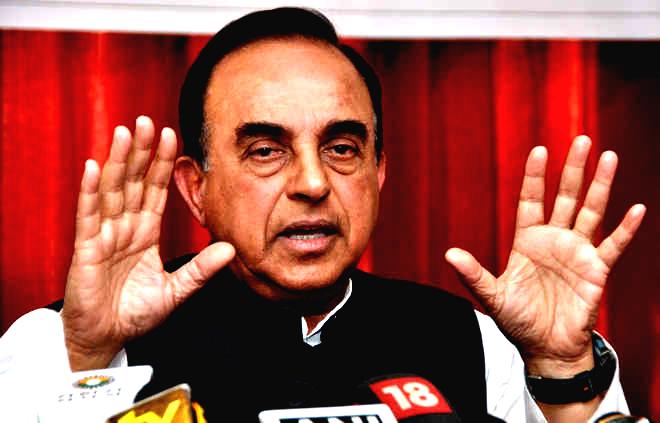The state of Karnataka goes to polls in April or May to elect members to the 224 seats in the Karnataka’s Vidhan Soudha. The state is currently governed by the Indian National Congress which won a simple majority in the previous elections. The tenure of Karnataka assembly ends on May 30, 2018. As one of the last remaining bastions of the Congress and the most probable foothold for the BJP in the south, the elections in Karnataka will be keenly watched and mercilessly fought between the two leviathans of the Indian Politics.
BJP leader Subramanian Swamy turned prophetic and predicted 125-130 seats for the BJP. Subramanian Swamy said that the party is sure to win the coming Karnataka elections primarily due to the fractured minority votes and consolidation of majority Hindu votes. Swamy further mentioned that BJP would get additional Muslim minority women’s votes because of the PM Modi’s crusade to abolish triple talaq. Subramanian Swamy further added that Shias, Bohras and other smaller minority groups stand resolutely behind the BJP.
“Minority men may consolidate behind Congress, but women are voting solidly for us,” Subramanian Swamy added.
Subramanian Swamy was in Bangalore to participate in a panel discussion held at “The Huddle”, a thought conclave, conducted by The Hindu Publication here. Subramanian Swamy said that the media is trying to make Karnataka Elections a contest between Chief Minister Siddaramaiah and Prime Minister Narendra Modi but the real contest will be between minority appeasement and Hindutva.
“The battle is between minority appeasement and Hindutva, nothing else. This is the new factor in Indian politics. I see no battle between Siddaramaih and Prime Minister Modi. That is the bottom-line…. Subramanian Swamy said.
What Subramanian Swamy is said is not far from truth, BJP has left no stone unturned to wrest Congress’s crown jewel from it. The formidable poll machinery of the BJP has already set into motion its battle plans for Karnataka. It began its election campaign officially on 2 November 2017 with the launch of Nava Karnataka Nirmana Parivarthana rally, a tour across Karnataka led by its state president and former Chief Minister of the state, Shri B. S. Yeddyurappa. The rally was completed in 85 days after covering all the assembly constituencies and culminated in Bengaluru on 4 February 2018 where a gargantuan rally by the Indian Prime Minister Shri Narendra Modi added some much-needed firepower to it.
The ruling Congress party, not wanting to be outdone, presented its final budget to the state assembly. The Budget envisaged a spending of Rs 2.09 lakh crore, primarily on sops and loan waivers in a bid to consolidate the votes in its favor. In a please all budget, the state’s Chief Minister and also its Finance Minister, Shri Siddaramaiah has ensured that his support base among other sections was well covered. But it must be noted that after making additional allocations for populist measures, the state’s liabilities have bloated from Rs 2.42 lakh crore to Rs 2.86 lakh crore, thus increasing the share of debt to GSDP from 18.93% to 20.36%. The stage is now set for a titanic clash between a super-buffed BJP and a resilient Congress.
But while, prima facie, the headlines in the print media and the posts in the social media make the Karnataka elections a two-party showdown, it is actually a three-horse race. Another player, the regional JD-S has tied up with the BSP to contest the elections together. BSP, a comparative non-entity in Karnataka Politics, has gone for a pre-poll alliance for the first time since the Ram Mandir days, a testament to its fight for survival and relevance. NCP, based in Maharastra looks to contest elections in an alliance with the JD-S as it expects to fetch in some votes in the Marathi-speaking parts of Karnataka.
A multi-party contest mostly turns out to be beneficial for the BJP which is widely regarded in the vast swathes of a country as a right-wing Hindu party catering exclusively to upper castes. The opposition votes are fragmented and BJP, if it manages to hold out its own vote share and get its voters to vote (actually a big headache for the BJP’s poll managers), easily wins the contest.
The opposition, if united, reduces the contests to brutal trench warfare with a result that most of the top brass in the BJP loathe. However, the recent outreaches of the Prime Minister aim to change this perception about the BJP. If the 2014 election was about Ache Din, 2019 (or 2018) will be about the poor. The buildup initiated with the Jan Dhan and the Ujwala Yojana continued with the PAHAL and Saubhagya Yojana and now the Ayushman Yojana and the recent Central Budget. The women, in particular, have become the highlight of Modi’s endeavor for an inclusive society.
One important policy as highlighted by Subramanian Swamy, that may have a wide-reaching impact is his championing of the Instant Triple Talaq criminalization bill. It could lead to a major split in minority votes. This split in Minority votes where the men of the minority may consolidate behind the opposition and the women backing the BJP will be enough to propel the party to a comfortable lead.
Subramanian Swamy had a point when he said that BJP has strong chances to wrest Karnataka back from the Congress. The Siddaramaiah Government has not made any lasting positive impact on the lives of the people of the state. A plethora of recent misadventures and defections of several senior leaders have weakened the Congress. But the biggest enemy of the BJP in Karnataka is the BJP, itself. The party must put an end to factionalism and lethargy in its state unit. Only then can the state be won. If not, then we look at a hung assembly, whenever the results are declared.
